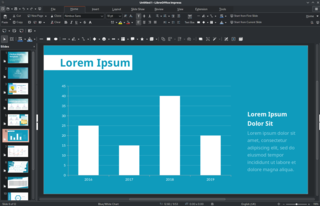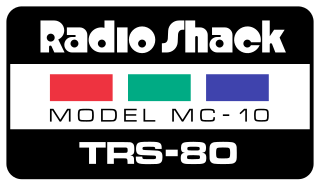Related Research Articles

The Apple II is an 8-bit home computer and one of the world's first highly successful mass-produced microcomputer products. It was designed primarily by Steve Wozniak; Steve Jobs oversaw the development of Apple II's foam-molded plastic case and Rod Holt developed the switching power supply. It was introduced by Jobs and Wozniak at the 1977 West Coast Computer Faire, and marks Apple's first launch of a personal computer aimed at a consumer market—branded toward American households rather than businessmen or computer hobbyists.

A microcomputer is a small, relatively inexpensive computer having a central processing unit (CPU) made out of a microprocessor. The computer also includes memory and input/output (I/O) circuitry together mounted on a printed circuit board (PCB) Microcomputers became popular in the 1970s and 1980s with the advent of increasingly powerful microprocessors. The predecessors to these computers, mainframes and minicomputers, were comparatively much larger and more expensive. Many microcomputers are also personal computers. An early use of the term personal computer in 1962 predates microprocessor-based designs. (See "Personal Computer: Computers at Companies" reference below). A microcomputer used as an embedded control system may have no human-readable input and output devices. "Personal computer" may be used generically or may denote an IBM PC compatible machine.

Li-Chen Wang is an American computer engineer, best known for his Palo Alto Tiny BASIC for Intel 8080-based microcomputers. He was a member of the Homebrew Computer Club and made significant contributions to the software for early microcomputer systems from Tandy Corporation and Cromemco. He made early use of the word copyleft, in Palo Alto Tiny BASIC's distribution notice "@COPYLEFT ALL WRONGS RESERVED" in June 1976.

The Homebrew Computer Club was an early computer hobbyist group in Menlo Park, California, which met from March 1975 to December 1986. The club had an influential role in the development of the microcomputer revolution and the rise of that aspect of the Silicon Valley information technology industrial complex.

The S-100 bus or Altair bus, IEEE 696-1983(withdrawn), is an early computer bus designed in 1974 as a part of the Altair 8800. The S-100 bus was the first industry standard expansion bus for the microcomputer industry. S-100 computers, consisting of processor and peripheral cards, were produced by a number of manufacturers. The S-100 bus formed the basis for homebrew computers whose builders implemented drivers for CP/M and MP/M. These S-100 microcomputers ran the gamut from hobbyist toy to small business workstation and were common in early home computers until the advent of the IBM PC.

In computing, a presentation program is a software package used to display information in the form of a slide show. It has three major functions:

WXOW, virtual channel 19, is an ABC-affiliated television station licensed to La Crosse, Wisconsin, United States, and serving Western Wisconsin. The station is owned by the Allen Media Broadcasting subsidiary of Los Angeles–based Entertainment Studios. WXOW's studios and transmitter are located on County Highway 25 in La Crescent, Minnesota.

WAOW, virtual and VHF digital channel 9, is an ABC-affiliated television station licensed to Wausau, Wisconsin, United States, and serving north-central Wisconsin. The station is owned by the Allen Media Broadcasting subsidiary of Los Angeles–based Entertainment Studios. WAOW's studios are located on Grand Avenue/US 51 in Wausau, and its transmitter is located on Rib Mountain.

The TRS-80 MC-10 microcomputer is a lesser-known member of the TRS-80 line of home computers, produced by Tandy Corporation in the early 1980s and sold through their RadioShack chain of electronics stores. It was a low-cost alternative to Tandy's own TRS-80 Color Computer to compete with entry-level machines such as the Commodore VIC-20 and Sinclair ZX81.
WKOW, virtual channel 27, is an ABC-affiliated television station licensed to Madison, Wisconsin, United States. The station is owned by the Allen Media Broadcasting subsidiary of Los Angeles–based Entertainment Studios. WKOW's studios are located on Tokay Boulevard on Madison's west side, and its transmitter is located in the Middleton Junction section of the town of Middleton.
WeatherStar is the technology used by American cable and satellite television network The Weather Channel (TWC) to generate its local forecast segments on cable and IPTV systems nationwide. The hardware takes the form of a computerized unit installed at a cable system's headend. It receives, generates, and inserts local forecast and other weather information, including weather advisories and warnings, into TWC's national programming.

Multibus is a computer bus standard used in industrial systems. It was developed by Intel Corporation and was adopted as the IEEE 796 bus.
Cromemco was a Mountain View, California microcomputer company known for its high-end Z80-based S-100 bus computers and peripherals in the early days of the personal computer revolution.

A personal computer (PC) is a multi-purpose microcomputer whose size, capabilities, and price make it feasible for individual use. Personal computers are intended to be operated directly by an end user, rather than by a computer expert or technician. Unlike large, costly minicomputers and mainframes, time-sharing by many people at the same time is not used with personal computers. Primarily in the late 1970s and 1980s, the term home computer was also used.
The Weather Channel is an American basic cable and satellite television channel owned by Byron Allen's Entertainment Studios that focuses on national and international weather information; although in recent years, the channel has also incorporated entertainment-based programs related to weather on its schedule. This article details the history of the channel, which dates back its founding to around 1980.

The Cromemco Dazzler was a graphics card for S-100 bus computers introduced in a Popular Electronics cover story in 1976. It was the first color graphics card available for microcomputers. The Dazzler was the first of a succession of increasingly capable graphics products from Cromemco which, by 1984, were in use at 80% of all television stations in the U.S. for the display of weather, news, and sports graphics.
McIDAS, the "Man computer Interactive Data Access System", is a weather forecasting tool developed at the University of Wisconsin–Madison in the 1970s and used continually to this day. In its early incarnations, it was widely used to generate graphics for television stations, but today is used primarily by the NOAA and related agencies. Users of the McIDAS system developed a similar version for microcomputers and sold by ColorGraphics Weather Systems that generated much of the computerized weather imagery seen on television in the US in the 1980s.

The Antarctic Meteorological Research Center (AMRC) is an Antarctic research program funded by the National Science Foundation (NSF) that is based out of the Space Science and Engineering Center (SSEC) at the University of Wisconsin. The AMRC was founded as a link between the UW-Madison automatic weather station (AWS) project and the Man computer Interactive Data Access System (McIDAS) project, also at UW-Madison.

Roger Douglas Melen is an electrical engineer recognized for his early contributions to the microcomputer industry, and for his technical innovations.

Harry T. Garland is a scientist, engineer, author, and entrepreneur who co-founded Cromemco Inc., one of the earliest and most successful microcomputer companies. He received the B.A. degree in mathematics from Kalamazoo College, and the Ph.D. degree in biophysics from Stanford University. Dr. Garland has been recognized as one of the most important innovators in the development of personal computers in Silicon Valley.
References
Notes
- 1 2 3 Nelson 2007 , p. 303
- 1 2 Nelson 2007 , p. 306
- ↑ Nelson 2007 , p. 302
- ↑ Robert Kuhmann, "Cromemco S-100 computer ~ a Silicon Valley memoir (1977–1997)", January 2008
- 1 2 "Weather Central History". Archived from the original on December 14, 2008.
- ↑ Melton, Louise (November 1984). "Video Processing". Computers & Electronics. Vol. 22, no. 11. p. 96.
Some 80% of all the television stations in the country use Colorgraphics’s LiveLine systems to generate weather, news and sports graphics. The basic system is built around Cromemco microcomputers
Bibliography
- Nelson, Mike (2007). Colorado Weather Almanac . Big Earth Publishing. ISBN 1555664016.